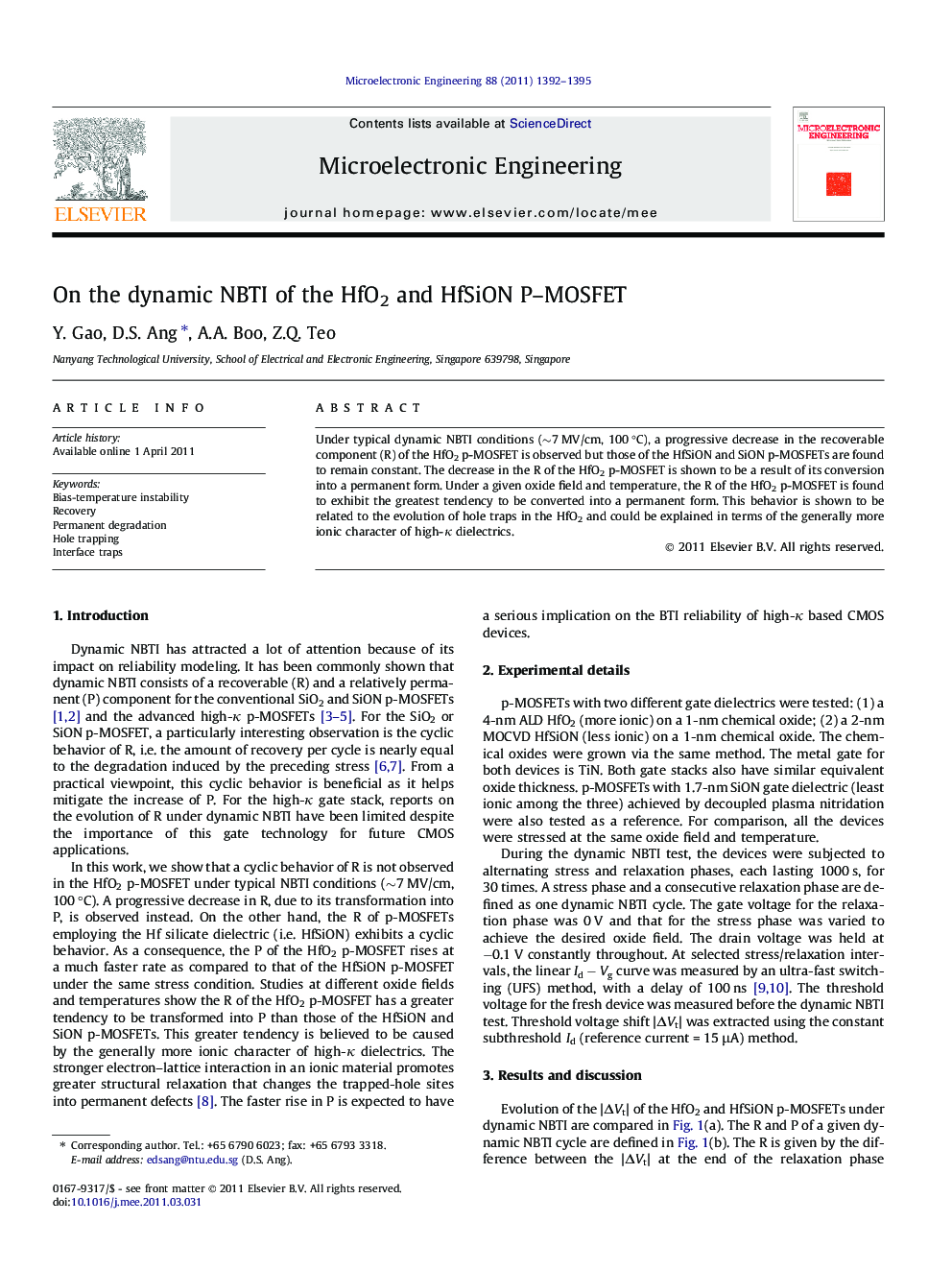| Article ID | Journal | Published Year | Pages | File Type |
|---|---|---|---|---|
| 540530 | Microelectronic Engineering | 2011 | 4 Pages |
Under typical dynamic NBTI conditions (∼7 MV/cm, 100 °C), a progressive decrease in the recoverable component (R) of the HfO2 p-MOSFET is observed but those of the HfSiON and SiON p-MOSFETs are found to remain constant. The decrease in the R of the HfO2 p-MOSFET is shown to be a result of its conversion into a permanent form. Under a given oxide field and temperature, the R of the HfO2 p-MOSFET is found to exhibit the greatest tendency to be converted into a permanent form. This behavior is shown to be related to the evolution of hole traps in the HfO2 and could be explained in terms of the generally more ionic character of high-κ dielectrics.
Graphical abstractUnder a given NBTI condition, the stressed induced hole traps of the HfO2 p-MOSFET is shown to exhibit a greater tendency to be transformed into a permanent form, as compared to those in the HfSiON and SiON p-MOSFETs. This behavior is attributed to the more ionic nature of high-κ materials.Figure optionsDownload full-size imageDownload as PowerPoint slideHighlights► R: Decrease (HfO2) Vs constant (HfSiON/SiON). ► R to P conversion. ► Hole traps. ► Ionic character.
